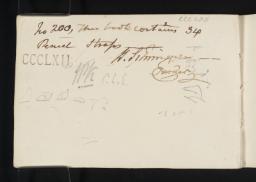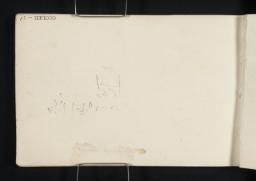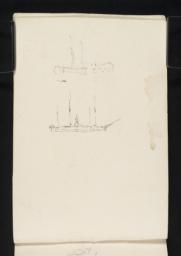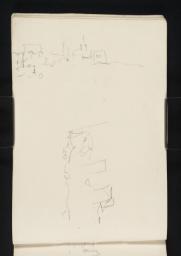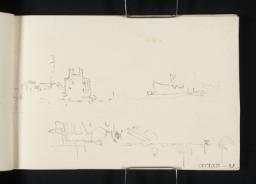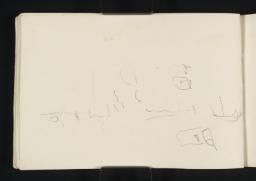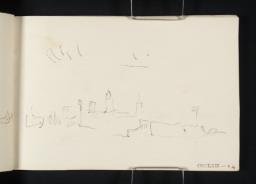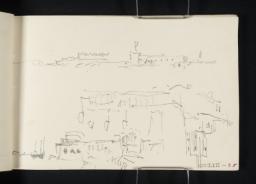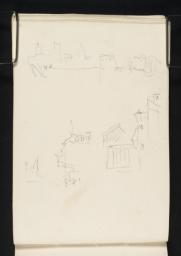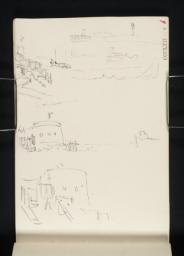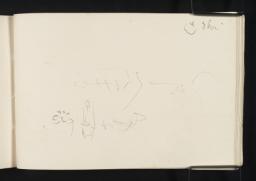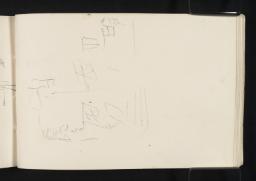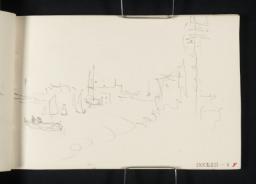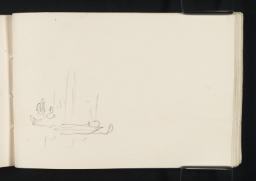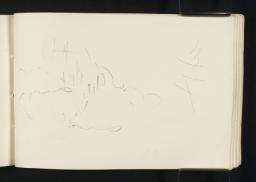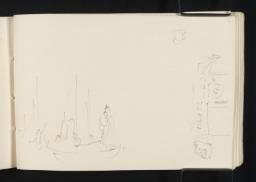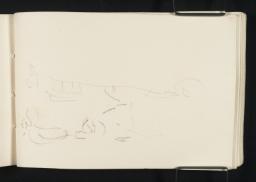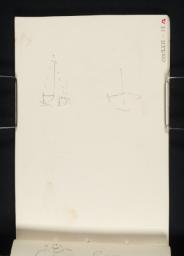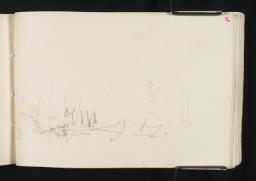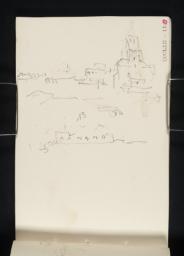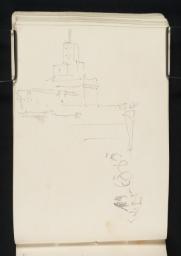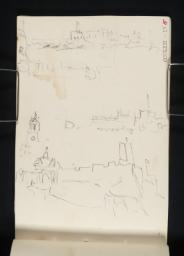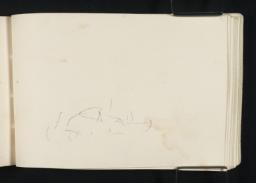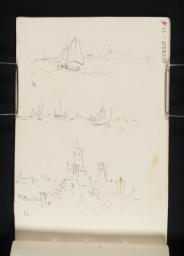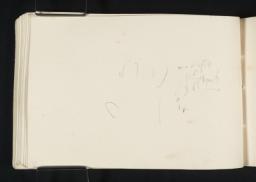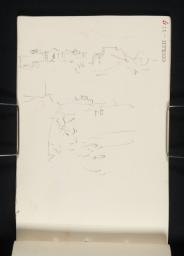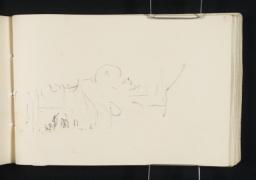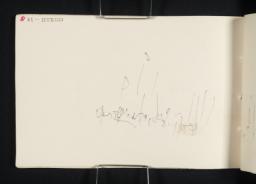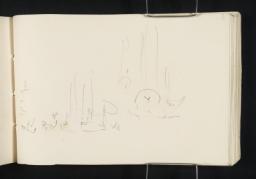Turner Bequest CCCLXII 1–37a
Sketchbook bound in card, covered in red leather blind-stamped overall with stylised foliage pattern
37 leaves and past-downs of white wove paper; page size 74 x 116 mm
Numbered 200 as part of the Turner Schedule in 1854 and endorsed by the Executors of the Turner Bequest, inside front cover (D41236)
Blind-stamped with Turner Bequest monogram on front cover towards top left
Stamped in black ‘CCCLXXII’ on front cover, top right
37 leaves and past-downs of white wove paper; page size 74 x 116 mm
Numbered 200 as part of the Turner Schedule in 1854 and endorsed by the Executors of the Turner Bequest, inside front cover (D41236)
Blind-stamped with Turner Bequest monogram on front cover towards top left
Stamped in black ‘CCCLXXII’ on front cover, top right
Accepted by the nation as part of the Turner Bequest 1856
Exhibition history
References
The sole subject of this small book (formerly known as the ‘Folkestone (?)’ sketchbook) is the arrival of Louis-Philippe, King of the French, at Portsmouth Harbour on 8 October 1844. The direct connection with the visit was made by Ian Warrell,1 and is conclusive in terms of the sketchbook’s combination of fleeting drawings of figures and shipping intermingled with architectural studies of Portsmouth’s harbourside architecture and the Gomer, the distinctive hybrid sail-steamship on which the French king arrived, as discussed in more detail in the overall Introduction to this section.
David Blayney Brown previously made a tentative connection from the ‘several sketches of large fully rigged ships or yachts dressed with bunting’ on folios 12 recto, 23 verso, and 31 recto and verso (Tate D35706, D35727, D35743, D35744) ‘that suggest some kind of regatta’ this sketchbook, through some of those watercolours with ‘their rather festive air’, to ‘events like Louis-Philippe’s arrival at Portsmouth in 1844, or the return visit of Victoria and Albert to Tréport in 1845’.2 For no apparent reason in terms of its topographical drawings, Finberg had associated the book with Folkestone in Kent and dated it to about 1845;3 a passing remark that the painting Seascape: Folkestone of about that date (private collection)4 ‘is apparently connected with studies on [sic] the Folkestone and Dieppe sketch books, c. 1845’5 has led to brief consideration and dismissal of links with the present book,6 though in any case it seems probable that the atmospheric watercolour studies in the Ideas of Folkestone sketchbook (Tate; Turner Bequest CCCLVI) were meant, along with those in the contemporary Dieppe sketchbook (Tate; Turner Bequest CCCLX).
It is likely that the few dozen small pages of the present book were filled in the course of 8 October 1844, some of the sketches being very slight impressions, and barely decipherable out of context. Even the most detailed could only have occupied a few minutes; as Warrell notes, the drawings suggest Turner ‘was afloat from early in the day, and that he moved around relatively effortlessly, following the course of events as they unfolded, initially from near Southsea Castle, where the French squadron was first saluted, then right up to the Royal Clarence Victualling Yard [now the much changed Royal Clarence Marina], where Louis-Philippe disembarked.’7 Perhaps in the summer of 1824, Turner had conducted a thorough survey of the Portsmouth and Gosport area in the London Bridge and Portsmouth sketchbook (Tate; Turner Bequest CCVI), which contains many minutely detailed architectural studies; see the ‘Thames, London and South of England 1821–7’ section of this catalogue. This existing resource, along with the need to move around the busy setting of an unfolding event, presumably accounts for the perfunctory nature of many of the drawings here, which have no very precise links to the loose watercolour studies covered elsewhere in this section and two unfinished paintings (see the overall Introduction).
Sketches recording notable contemporary events as they happened have a few precedents in Turner’s work; see for example 1814 Review at Portsmouth sketchbook (Tate; Turner Bequest CXXXVI), and the ‘George IV’s visit to Edinburgh 1822’ section, where the King’s Visit to Edinburgh sketchbook (Tate; Turner Bequest CC) includes the royal squadron arriving in the Firth of Forth and the disembarkation at Leith, as well as crowd scenes. Another example is the 1825 foundation stone ceremony for the new London Bridge, shown moment by moment in the Mortlake and Pulborough sketchbook (Tate; Turner Bequest CCXIII, in the ‘Thames, London and South of England 1821–7’ section) in terms both of a grand waterborne procession and the ceremony itself. Drawings of the latter are rendered so slightly as to serve mainly as a series of private aides-memoires, rather like the sketches in the present book.
With the 1822 sketchbook mentioned above in mind, as well as the contemporary King at Edinburgh book (Tate; Turner Bequest CCI), this sketchbook is here renamed Louis-Philippe at Portsmouth.
Technical notes
How to cite
Matthew Imms, ‘Louis-Philippe at Portsmouth sketchbook 1844’, sketchbook, September 2016, in David Blayney Brown (ed.), J.M.W. Turner: Sketchbooks, Drawings and Watercolours, Tate Research Publication, March 2017, https://www

